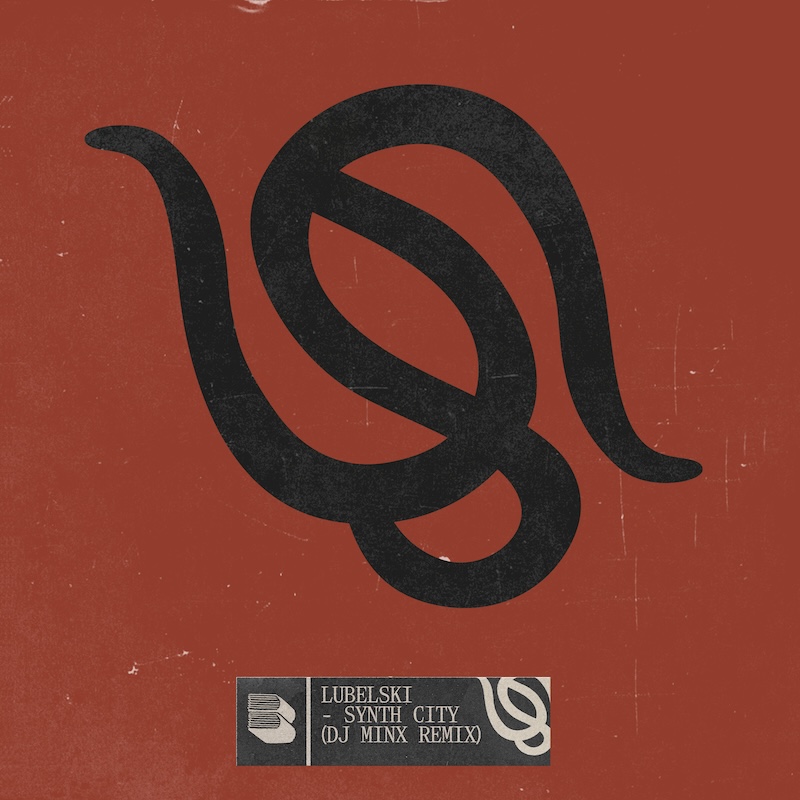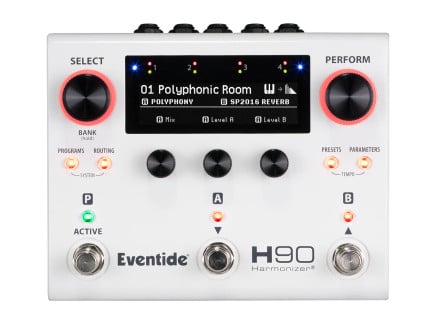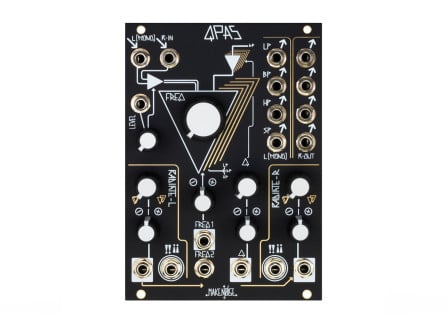Today, electronic musician, modular synth enthusiast, and all-around party-starting producer/performer Lubelski has released his newest EP: Synth City, out now on Black Book Records.
Synth City centers around an all-new eight-minute track that playfully defies the boundaries between dance music genres and tropes—with an almost tongue-in-cheek presentation that prioritizes fun over strict genre-based allegiances. Like the rest of Lubelski's music, it's an evolving journey that will keep you moving from start to finish. The track "Synth City" is accompanied by a pulsating, keep-the-beat-going, dance-floor-ready remix by the inimitable DJ Minx, as well as a dizzying and driving three-minute B-side by Lubelski himself, entitled "Tear the Roof Off."
According to Lubelski, "Synth City" originated in the Spring of 2022—essentially "pouring out of him" in a single night between gigs, parties, and marathon studio sessions. Away from his studio with only a laptop and Bluetooth speaker, it came together from idea to finished track in mere hours, in an enigmatic and pure creative flow. And though the methods behind this release differ from some of his modular synth-centric albums and live jams, the same spirit is present: Lubelski's characteristic "do whatever feels right and have fun" ethos comes through as strongly as ever.
We recently partnered with Lubelski to give away an Eventide H90 multi-effect processor—be sure to enter here for your chance to win, while the giveaway is still going! To help celebrate the release of Synth City, we also had a chat with Lubelski, talking about modular synthesizers, the H90, his thoughts on music hardware in general, and of course, the process behind the new EP. Read on to see what he had to say.
An Interview with Lubelski

Perfect Circuit: We're curious to get to know more about your beginnings in electronic music production—can you tell us how you first got started? What type of music were you listening to? Where were you looking for inspiration? What was your setup like?
Lubelski: I first started recording and making beats when I was about 14. I was listening to a lot of rock, metal, downtempo electronic, and jazz. A few of my friends and I would record ourselves and make beats and what not. But when they got into dubstep, I got into house. I was terrible making wubs. But I liked a bit of everything. Early on I loved to sample whatever i heard and try to make something interesting out of it.
I had a couple of speakers, a computer, and a condenser mic. Reason and Pro Tools were my main DAWs. I’d say, Reason taught me my way around a studio. Patching the interface on that thing felt pretty educational at times.
PC: So, many electronic musicians work entirely in the box—but it seems like working with hardware has become important to your workflow. Was hardware always important to you?
Lubelski: Hardware makes the process feel more alive. These days, a lot of software emulations are almost identical to their physical counterparts. But having something tangible in front of you is just more fun, in my opinion.
I love the degree of uncertainty in patching modular synths, which can be difficult to replicate with soft synths. When all the electricity courses through the circuitry, there is chance for “error” which I love to exploit in my music. I think the magic is in the jam. Whereas digital can be a little too precise at times.
PC: What was the first piece of hardware that really became an important part of your production or performance process? What about it in particular spoke to you?
Lubelski: The first synthesizer I ever purchased was the Moog Sub37. The first run of them came with a plastic pot behind the cut off filter knob, so when you turned it, the filter would fuck up the sound and get all scratchy. The big knob was the whole reason to get this thing! But instead of complaining, I decided to embrace it.
PC: Some of your past releases like Happy Accidents make extensive use of modular synthesizers. I'm curious—how did you originally get into modular synths? Why did you wind up deciding they were the right tool for your music?
Lubelski: I took Electronic Sound Synthesis at UCSC. I would go into the studios where I got some good one on one with an E-mu modular system. I loved that it was clunky and archaic. It was a lot of fun to try and just get it to make a sound at all. Like it had secret sounds of the universe locked away in it.
After college, I found a good deal on a Doepfer starter rack. Started selling modules and buying new ones. Then a bigger case and so on. I’m not sure it’s necessarily the right tool, but I love the chaos.
PC: Many people don't think of modular synths as being especially conducive to making dance music…but you're clearly making it work. What is the process like turning your patches or modular jam recordings into release-ready music?
Lubelski: My jams are usually just my modular rig and a drum machine, recording all the sounds separately through a mixer. Then I go through the audio and pick out an idea in the jam that might work as a song, or maybe just a tone or phrase that might end up chopped and re-sampled. Either way, I find it to be very useful for ideation. Like having a conversation with the synth, as opposed to telling it what to do.
PC: I also know that you've done a ton of Twitch streams and live performances where the modular plays a pretty central role. How does the modular usually factor into live sets or jams? How do you navigate the modular in a live performance context?
Lubelski: On Twitch, it felt lower stakes since I was mostly performing for a camera and a computer. I could just be ridiculous. I think modular can get this wrap for being a little chin-strokey at times, so it was fun trying to translate it into something more playful during the streams.
In a live context, I use modular in a couple different ways. If it’s a full live set, it’s just my modular rig, a drum machine, and me. No computer. I’ve occasionally brought it on the road to gigs as a hybrid set type thing, but it’s hard to justify traveling with a 60-pound FX send all the time.
Creating a live set with it has been a fun project that seems to continuously evolve. Whether I incorporate a few more pieces of gear or some visual aspect, the possibilities are endless.
PC: Now, after years of working with modular synths, what do you think are their greatest strengths? What do you think are their biggest weaknesses? And—perhaps from a slightly different angle—how do they challenge you as a musician?
Lubelski: I think their biggest strength is their ability to quickly generate new ideas and sounds. No two patches are ever quite the same, so it’s something new every time. Biggest weakness is its matchstick nature, which is also kind of its strength in a way…as long as you’ve hit the record button.
I think modular synths challenge me because they never do exactly what you want them to. Tuning them can be hell. They can break. I guess it challenges me to be a little more patient? Sometimes I have to let go and just let the machine make the sounds it wants to.
PC: Of course, we know your interest in hardware isn't limited to modular gear; in fact, we've seen recently that you've been getting good use out of the Eventide H90 pedal. Had you worked with any Eventide software or hardware prior to getting an H90?
Lubelski: I’ve had some time with an H3000. As far as multi effects processors go, it’s one of the best to ever do it. The H90 is compact, very easy to use, and has a great tone. I love the ability to add inserts and change routing that lets you layer processing chains in unique ways within it.
PC: How does it fit into your workflow? Are you tossing it onto a synth and recording it live? Does it live on a send/return in your DAW?
Lubelski: I have outputs designated on my patch bay so I can easily throw any sound from my DAW through outboard gear. I prefer to have a dry signal before adding processing though.
PC: Do you have any go-to algorithms or presets on H90? Any special tips or tricks to share?
Lubelski: I try to find something new every time I use it, but I really like 80s Villain, Bass Talk, and Lost City. There’s tons of quick gold in there. Biggest tip would be to jam and tweak. Stop when you know you’ve got something good.
PC: Of course, we're stoked to hear that your newest EP Synth City was just released. How would you say that Synth City differs from other recent releases?
 Cover art for Lubelski's Synth City
Cover art for Lubelski's Synth City
Lubelski: "Synth City" is one of those tracks that came together on its own. No matter how many times I tried to add a vocal or shorten it, the track wouldn’t let me. It’s a bit of a journey and I don’t know if it would work any other way.
All I can say is that it’s been close to my chest for the last two years so it feels good to finally release it into the wild.
PC: What ideas or inspiration did you have in mind going into making the tracks on Synth City?
Lubelski: I didn’t have any ideas going into it. It just kind of spilled out of me.
I made the whole thing in one night, on my couch. Funny enough, without any hardware except a bluetooth speaker. I was jamming with a free rate arpeggiator, just crunching numbers, dividing and multiplying milliseconds. And chopped up the jam that night. This is where digital precision comes in handy.
I wouldn’t have been able to do it without the mindset that I picked up with modular, though.
PC: With this release under your belt, what's next?
Lubelski: Just going with the flow, not being too critical, and continuously experimenting.














